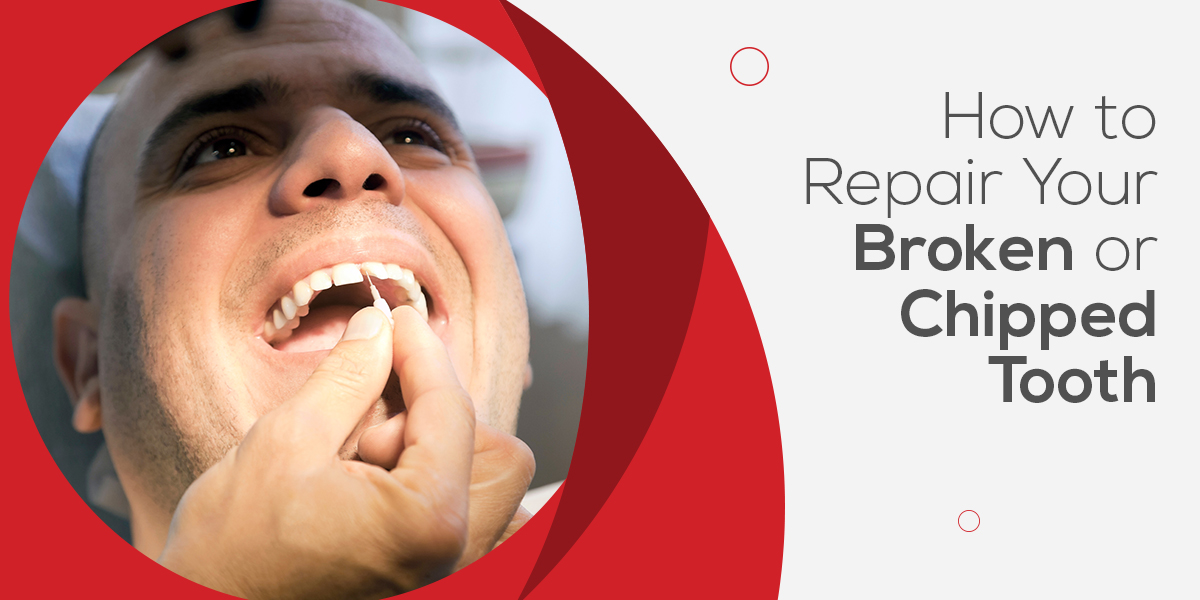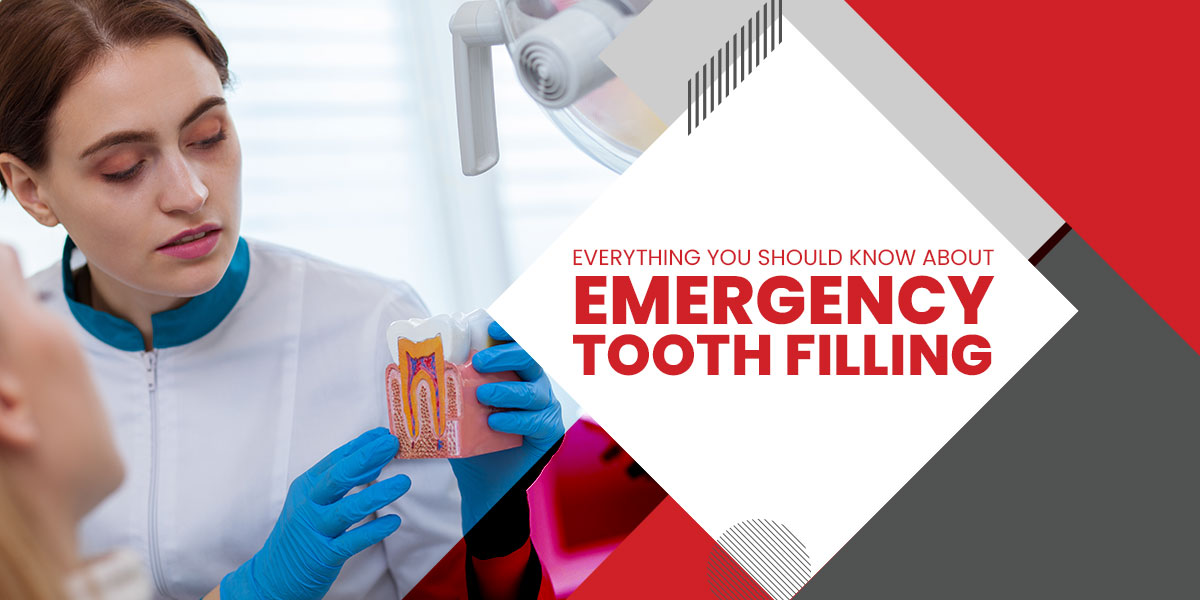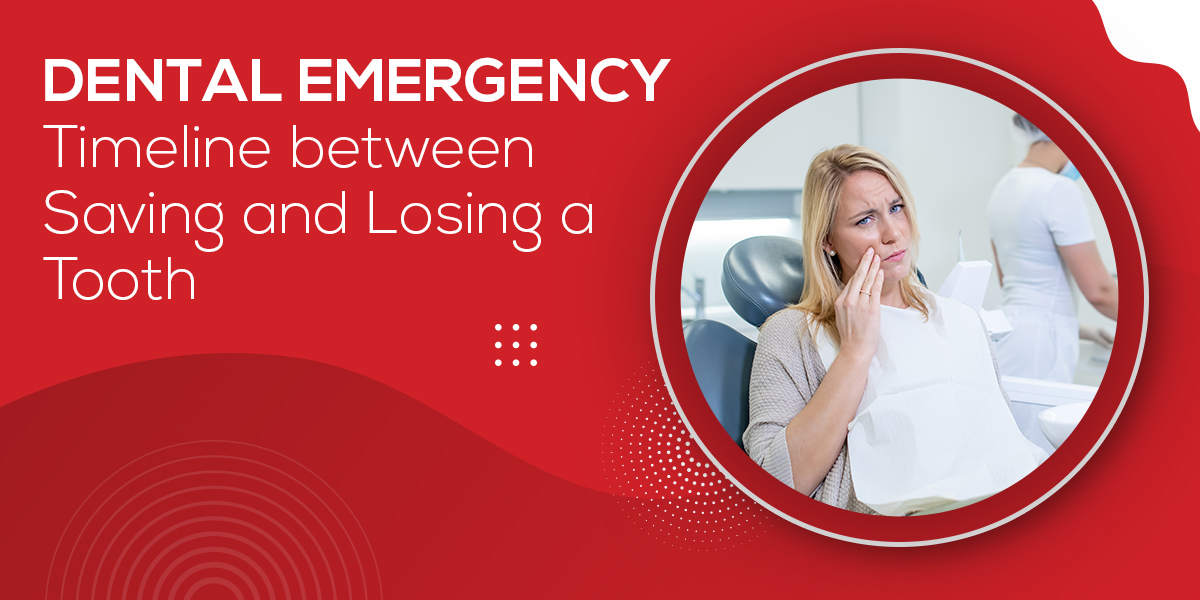
Are you crunching a piece of hard candy or ice? Did you find something hard in your mouth that does not dissolve or melt? If yes, then you will have an uneasy feeling when you realise that it is a piece of broken tooth. Enamel is the outside layer of the tooth and is the hardest tissue in your body. So, biting down on something hard, getting a blow to your face or falling can be the reason for a tooth to break or chip easily. When you find there is a chipped or broken tooth, there are several things your dentist can do and fix it quickly.
How to care for a broken or chipped tooth
If your tooth is fractured, chipped or broken, you need to visit a dentist soon. Otherwise, the tooth may become infected or get damaged further, causing you to end up losing your tooth long term.
You may try out these self-care measures for the time-being:
- If you have a painful tooth, take acetaminophen or some other over-the-counter pain reliever. Try to rinse your mouth with saltwater only.
- If a tooth breaks and leaves a sharp edge, this makes a visit to the dentist even more urgent as the tooth could cut your cheek or tongue.
- When eating with a chipped tooth, try to eat soft foods only and eat on the opposite side of the mouth if possible.
The treatment for a chipped or broken tooth depends on how severely it is damaged. If a small part of the tooth enamel is broken, the repair can be done in one office visit only. But a broken or severely damaged tooth may require a costly procedure.
Dental bonding or filling
If you have chipped off a small part of the tooth enamel, the dentist may repair the damage with a filling. When the repair is to be done on the front tooth, he will probably use a method called dental bonding which uses composite resin which matches the colour of your teeth.
Bonding is a simple process that should not require anaesthetic. For bonding a tooth, the dentist will prepare the surface of the tooth with a gel or liquid to roughen it and help strengthen the overall bond. After this, they will apply an adhesive material to the tooth with a tooth-coloured resin. Once the bonding material is shaped correctly the dentist uses ultraviolet light to harden the material.
Dental crown or cap
When a large piece of a tooth is broken or there is large tooth decay, the dentist may file down part of the leftover tooth. After this, they will cover the remaining tooth with a tooth-shaped cap or crown to protect it and improve the overall appearance. The permanent crowns are either made of metal, all resin, all ceramic or porcelain fused to metal. All-metal crowns seem to be the strongest however resin and porcelain crowns achieve a more natural appearance.
Getting a crown usually requires two dental visits. During the first visit, the dentist will take X-rays to check the root and surrounding bone. If there are no further causes for concern the dentist will start the preparation for the crown. The process begins by numbing the gums surrounding the tooth in question. Following this, parts of the remaining tooth will be shaped and filed down to create room to fit the dental crown. If a chip or break has left a large piece of the tooth missing, the dentist will use a filling material to build up the tooth making it a suitable base for the crown. After this, the dentist uses a putty-like material to take a mould of the teeth to send to the dental laboratory. During this time, the dentist may provide you with a temporary crown, made and stuck in the mouth with temporary material.
At the second visit (which is done after 2 to 3 weeks) the dentist will remove the temporary crown and check the fit of the final tooth before cementing it in place permanently.
Dental veneers
If the front tooth is chipped or broken, a dental veneer can make it appear healthy again. A dental veneer is a thin shell of tooth-coloured resin or porcelain composite material which covers the entire front part of the tooth.
To prepare a tooth, the dentist removes the enamel from the surface. After this, the dentist will take an impression of the teeth to send to the laboratory which prepares the veneer. Once the dental veneer is ready (which usually takes up to two weeks) you need to visit the dentist for them to fit it in the mouth. The dentist will prepare the tooth surface with a liquid and roughen it reading for placing the veneer. Then they will apply a strong cement to the veneer and place it on your prepared tooth. Your dentist uses a special light for activating chemicals in the cement to make it hard soon.
Call our dentists at 020 71832793 for your chipped tooth repair and get it done quickly.





